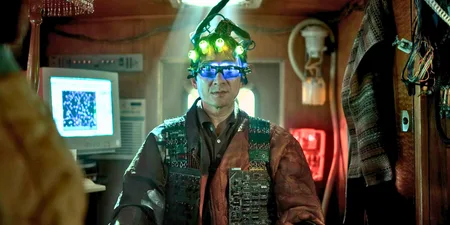It is an all too familiar story, both here and in the US
A manufacturing plant goes out of business, due to advances in automation, and it being cheaper to have the product produced elsewhere in the world. Hundreds of working-class men and women lose their jobs, and a once-thriving community becomes critically wounded. Yet far from being the end of the story, this is where Netflix’s excellent new documentary American Factory begins.
The film opens with the General Motors Moraine Assembly car factory in Dayton, Ohio, being shuttered in 2008. We then fast forward to 2015, when Chinese glass industry giant Fuyao reopened the plant, now producing windscreens. The film gives us access to all levels of the plant, from Fuyao group chairman Cao Dewang, down to the workers on the factory floor (often with these sorts of docs, you wonder why a massive corporation would give so much access to a camera crew, but the fact that this comes from the Obama’s production company Higher Ground probably opened some doors).
At first, American Factory plays out as a culture-clash comedy. Chairman Cao struts around making demands, causing a fuss over the placement of a fire alarm, his translator constantly sighing. Big slogans are installed in the lobby without anyone realising they haven’t been properly translated. One factory employee makes efforts to befriend his new Chinese co-workers, inviting them over for Thanksgiving and letting them take part in traditional American pass times like firing his large collection of guns and riding his Harley Davidson.
Things quickly take a turn for the worst though. Some former GM workers reveal they are being paid essentially half what they got from their previous employer. Cao and the Fuyao top brass make preventing unionisation their top priority, and the US operation lags behind its Chinese counterpart.
The striking cultural differences really come to the fore when a group of American employees visit a Fuyao plant in China. Their arrival is soundtracked to the Chinese workers singing what first appears to be a patriotic ballad but turns out to be an ode to their employee (sample lyrics: “For the sake of transparency, we have gone through difficulties / All blessings from Fuyao are transparent”).
The workers sound off together before starting their shift, Full Metal Jacket style. They scoff at their American counterparts getting “eight days off every month” (ie, weekends), but many also admit to only seeing their family a few times year.
One particularly Frank Grimes-looking American middle-manager, who has actually learned to speak Cantonese, gleefully agrees when it’s suggested that Americans talk too much at work, and shockingly then says that he wished he was allowed to put duct tape over his underlings’ mouth while they are on shift (later on, the same American tries to implement the Army-style sounding off back home. Shockingly, it does not go over well).
Soon enough, talk of unionisation spreads through the factory. The Chinese workers view their American colleagues as lazy and unmotivated, while local union representatives speak passionately about the rights won by the working people, and how they won’t let the rich dictate their lives.
As a documentary, American Factory is a great piece of filmmaking. It uses its access to weave a tale of multiple characters across the hierarchy of the plant, allowing them all to be three dimensional, and never reduced to caricatures. But even more interesting is the future of capitalism it presents. It has long been suggested that if the 20th century was the American Century, the 21st will belong to China.
But with that comes far more than just economic power. In the west, the labour movement has fought for certain expectations around worker’s rights to be standard – things that most people take for granted, like weekends. Chinese workers have a very different view on employment. The film reveals the underlying ideological issues that none of the trade deals that our leaders make take into account
American Factory ends with a somber note, predicting that 375 million people could be out of work by 2030 because of automation. Maybe that’s the ultimate answer. It doesn’t matter whose outlook wins out of the American and Chinese workers. Because very soon, they won’t have a job, and the rich will have realised it’s cheaper to replace them with a machine.







































